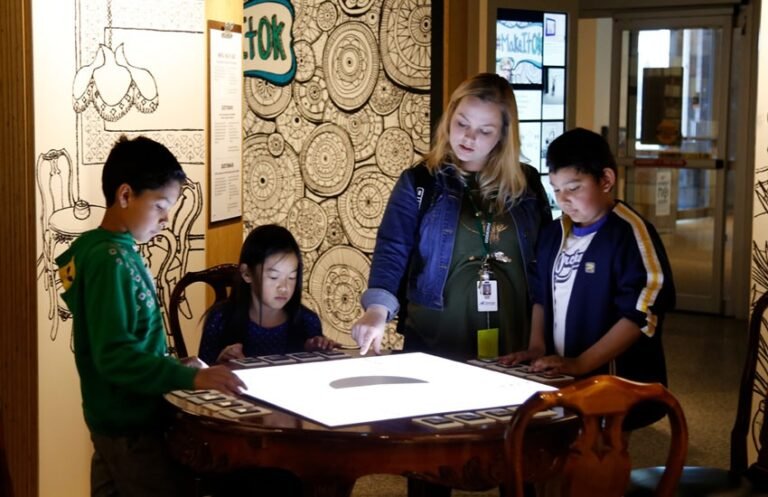I have visited many famous museums in the United States and around the world, from the Holocaust Memorial Museum in Washington, D.C., founded in 1993, to the State Hermitage Museum in St. Petersburg, Russia, founded in 1764. The famous Russian Empress Catherine II.
I love museums, especially ones where you actually do something rather than just look at what’s displayed on the walls. As a kid, I loved crawling through the pitch-black San Francisco Exploratorium tactile dome. The museum is dedicated to the world of senses and touch.
Reno may be known more for its Hot August Nights than for its museums, but these days the Terry Lee Wells Nevada Discovery Museum in Reno boasts a unique international traveling mental health exhibit.
As someone who lives with mental illness myself, this exhibit gets an A-plus in my book for creativity, interaction, and uniqueness. I never thought that my bipolar disorder diagnosis would be featured in a science museum next to a gigantic mock-up of an Allosaurus.
The ‘Mental Health: Mind Matters’ exhibit is a very fascinating exhibit on mental health that literally originates from the Finnish Science Center in Finland where Heureka was created. Its goal is to foster important conversations about mental illness, normalize them, and make it okay to talk about mental health. It’s also designed to drive home the obvious point: mental health is as much a science as aerospace or astronomy.
This exhibition means a lot to me. I have lived with bipolar disorder for over 30 years. I know how exhausting and repetitive it can be to explain to others what’s going on in your head. And I know that, not to mention how repetitive and distressing the conversation around mental health is.
Since the pandemic, mental health has attracted more public discussion than ever before, usually in the form of media attention and constant town halls. This exhibit is the first time I’ve seen such an engaging means of educating the public on a subject that usually tends to be a subject of negative discussion. Discussions about mental health often consist of data, statistics, and medical jargon, which can often sound downright depressing.
No one wakes up in the morning excited about being depressed. As a state, Nevada consistently ranks among the worst in mental health in the United States. Yes, that’s a reality, but that argument has gotten old.
Nevada may have finally found a compelling and engaging way to proactively discuss matters of the heart in a practical way. The highly digital exhibit has plenty of buttons to push, videos to watch, and things to listen to.
In one area, a mechanical “worry shredder” provides notepads and pens so exhibit visitors can write down their worries and shred them on the spot. The front of the shredder is glass, so users can literally watch their worries being shredded in real time.
Mini documentary videos are displayed throughout the exhibition to help visitors understand what some people living with mental illness go through. The purpose of the more than 20 life-sized elements is to foster respect and acceptance and reinforce the fact that mental illness is scientifically complex but treatable.
I was fascinated by the audiovisual history of mental illness treatment, dating back to the days when depressed patients were thought to have “bad blood” and were treated with leeches to suck it out. And yes, there is also talk of lobotomy and electroconvulsive treatment for severe depression.
My favorite activity is my makeshift dance studio. It promotes the concept that dance, music and physical activity are good for mental health. To make the exhibit comprehensive, everything is presented in English, Spanish, and French. Users must launch it by pressing the button for their desired language on each display.
All in all, a very unique learning experience that runs through September at the Discovery Museum. My only wish is that the exhibition creators back in Finland would include some positive video clips that show the artist’s well-documented history with mental illness, or even his diagnosis of bipolar disorder. He also performed a short clip of the late comedian Robin Williams, who is known for his work. Even Lady Gaga has openly talked about her experiences with depression and anxiety.
The show ends by paying tribute to Reno residents and encouraging them to anonymously share their thoughts on mental illness with others. The notes are then inserted into a clear plastic binder for everyone to read. Some people talk about their own eating disorders. Some people describe life with depression. If I had to write down my thoughts, I would write, “Never, never, never, never give up.”
Kim Palchikoff is a mental health writer and producer of the podcast No Stigma Nevada.
if you go
Contents: Mind Matters Exhibition
When: Open until September 8th
Location: Terry Lee Wells Nevada Discovery Museum, 490 S. Center St., Reno.


